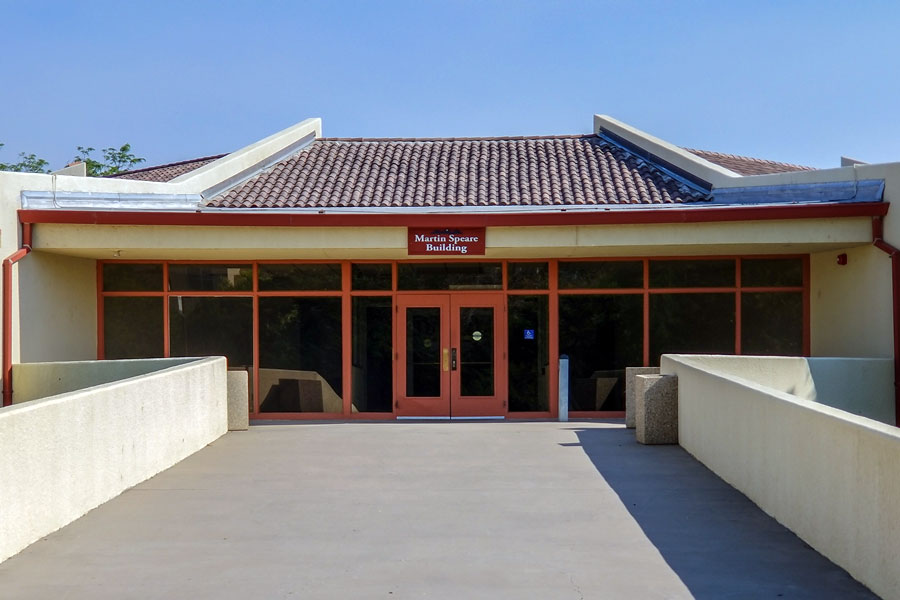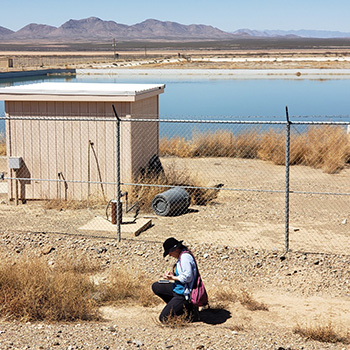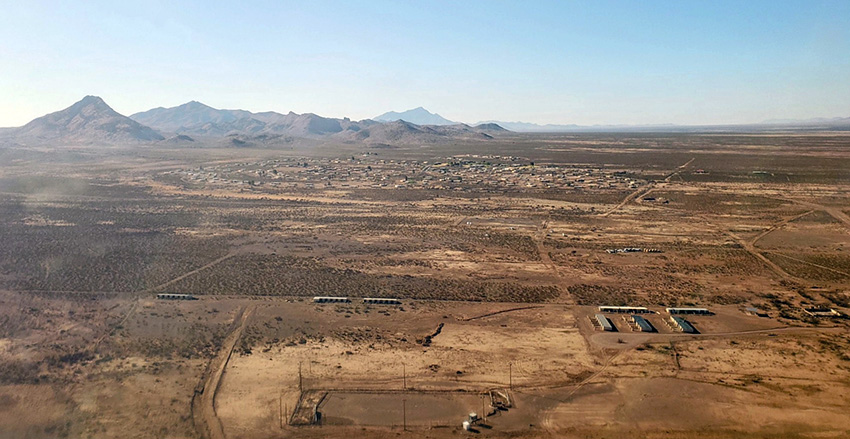
Center Facilities
Our Office

The Center will be located in Speare Hall on the New Mexico Tech campus. Renovation for the Center's new office space is currently underway. The initial build out will be about 1,600 square feet of space for offices, computers, and collaboration space.
Playas Research and Training Center
The Hantush-Deju Center for Hydrologic Innovation (the Center) is intended to continue the legacy the NMT hydrology program and will expand its impact as a center of excellence for decades to come. The Center will have research focus areas tailored to the strengths of the faculty and external research drivers. The Center will be flexible in selecting research programs to focus on so it can adapt or expand its research emphasis in response to the water needs in a changing world. Identifying new sources of fresh water and quantifying the amount of water in storage in our aquifers as well as the changes in storage as a result of pumping and climate change are key challenges for water managers concerned with sustainability of their underground water resource. The initial area of emphasis for the Center will help us better understand the infrastructure of our aquifers and quantify the components of the groundwater balance at scales ranging from a well field or groundwater basin to the global scale. This innovative research to evaluate water balance components utilizes remote sensing, GPS, and geodetic measurements to evaluate water flow by measuring small displacements of the earth. Some of the NMT faculty in the hydrology and geophysics programs are already working in these areas and make it an excellent choice for the initial research program at the Center.

The National Geographic Society has identified the protection and management of water resources - critical both to public health and to sustainable economic development - as the major issue facing the world’s society enters the 21st century. The overwhelming majority of the nation’s freshwater resources consists of groundwater, some 25% of which are located in cave and karst regions (areas of limestone formation that are characterized by sinks, ravines, and underground streams). New Mexico Tech is a national headquarters to the National Cave and Karst Research Institute (NCKRI) in Carlsbad, N.M. NCKRI is established through federal law via cooperative agreement with the National Parks Service and New Mexico state statute. NCKRI’s research and academic programs on the main campus in Socorro provide an excellent opportunity for cross-center collaboration. Furthermore the NCKRI national headquarters increase the breadth and depth of the collaboration with office space, research laboratory and conference space in the Permian basin.

The Playas Research and Training Center (PRTC), located in the former town of Playas, is in far southwestern New Mexico. The assets PRTC has include on-site house, classrooms, and experimental and training fields. PRTC is adjacent to Bureau of Land Management managed land and private landholdings. PRTC’s physical location is in the Playas Valley. The Playas Valley is a lengthy and narrow 97-km long valley located in Hidalgo County, N.M., in the Bootheel Region; the extreme south of the valley lies in Chihuahua, Mexico. Playas, N.M. is located in the northeast. The valley is noteworthy for the Playas Lake (dry lake) in the north. The Continental Divide of the Americas forms its western border in a series of three linear mountain ranges, and the divide forms the water divide as the northern border of the Playas Valley. The valley disappears southward into regions of the northwest Chihuahuan Desert of Chihuahua. Regions of the desert extend northward to foothills of various mountain ranges, canyons, washes, or other landforms. Its physical location, current infrastructure and the planned upgrades to the IT infrastructure make PRTC an excellent field station, laboratory, and classroom site for use by the new Hantush-Deju Center for Hydrologic Innovation.
PRTC can provide short- and long-term housing for intensive work in the area. Through an investment in high-quality laboratory facilities PRTC can build upon its current capabilities with an eye on providing world-class facilities for research. This would be coupled with the 45 miles of an optical network backbone and closed cellular network that can provide real-time access to instrumentation at field research sites located in remote areas. Such infrastructure and location would be ideal for faculty and student research in the area of Artificial Intelligence and its application both to groundwater systems and the distribution of water to an existing community. Given a choice of research sites on the abundant public lands in New Mexico, many researchers may choose to locate their projects at PRTC because of the benefits provided.
PRTC is also an ideal location to study green energy. New Mexico’s only geothermal power plant is a 14 MW geothermal power plant at Lightning Dock located 38 miles northwest of Playas. The plant was built is operated by Cyrq Energy. The plant was as addition to an existing power plant by Cyrq Energy and features an air-cooled condenser. The Playas Valley also is an excellent location for wind and solar energy-related research.